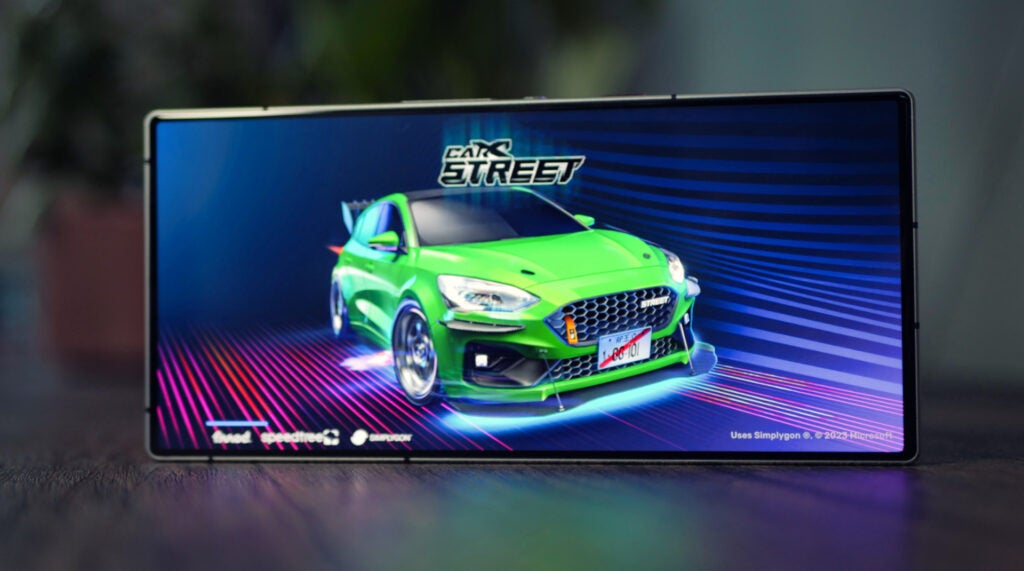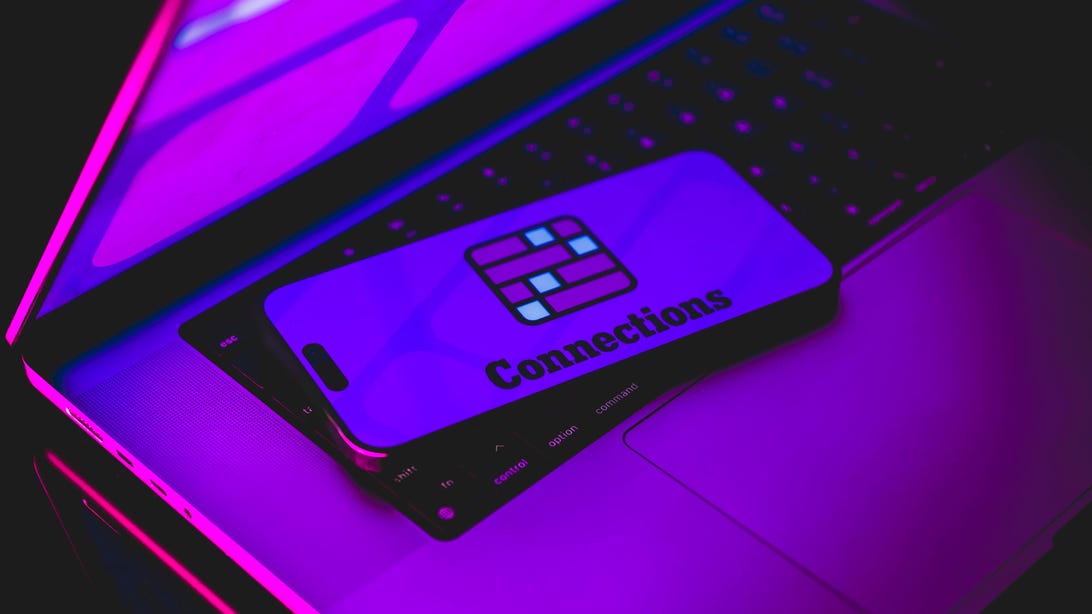Today's Wordle Hints and Answer: Help for May 6, #1052 - CNET

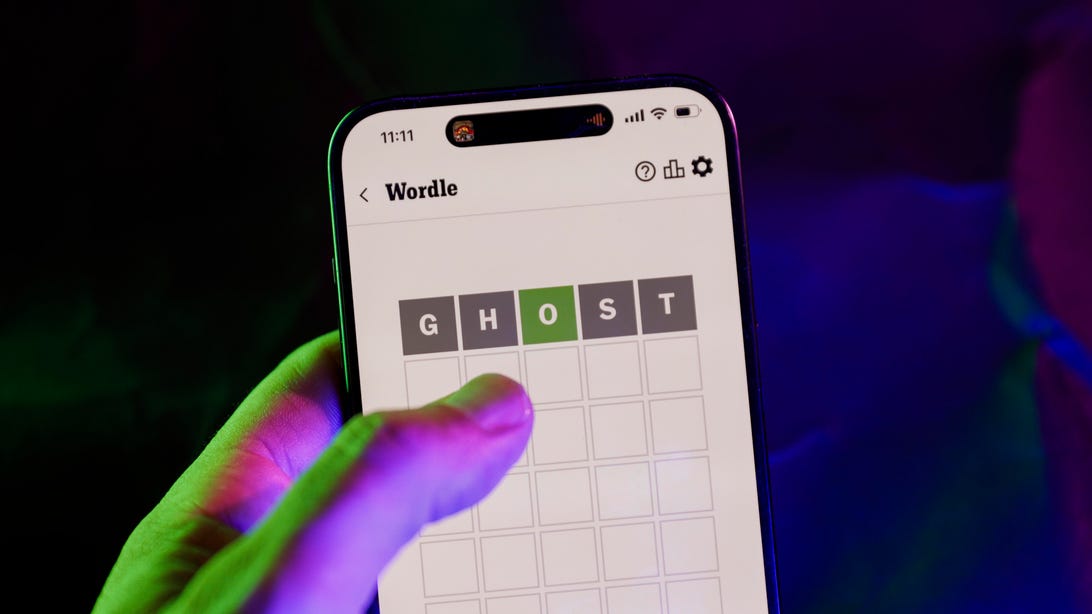



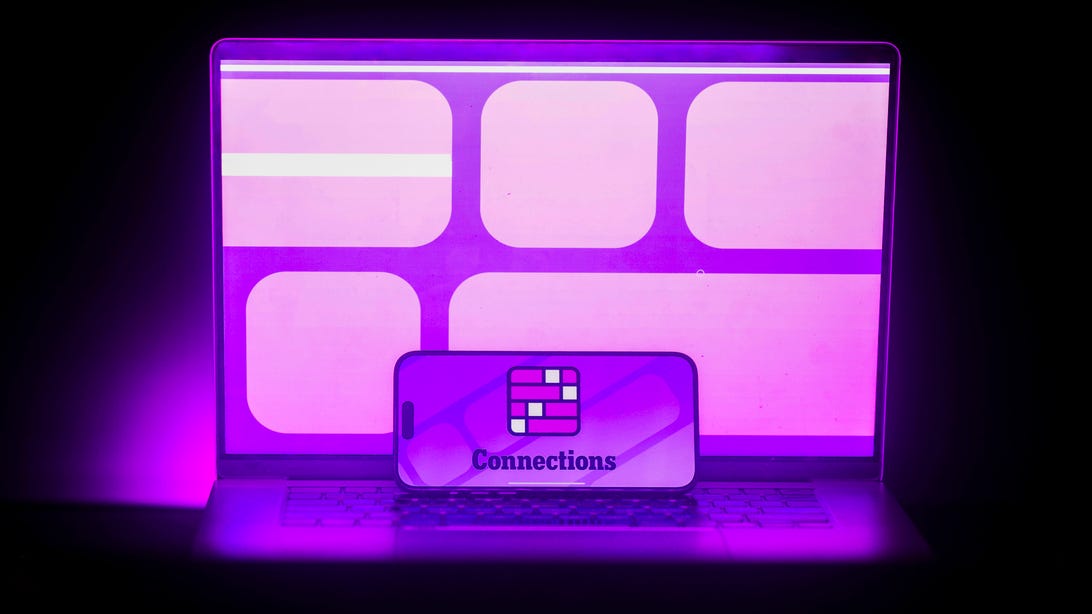

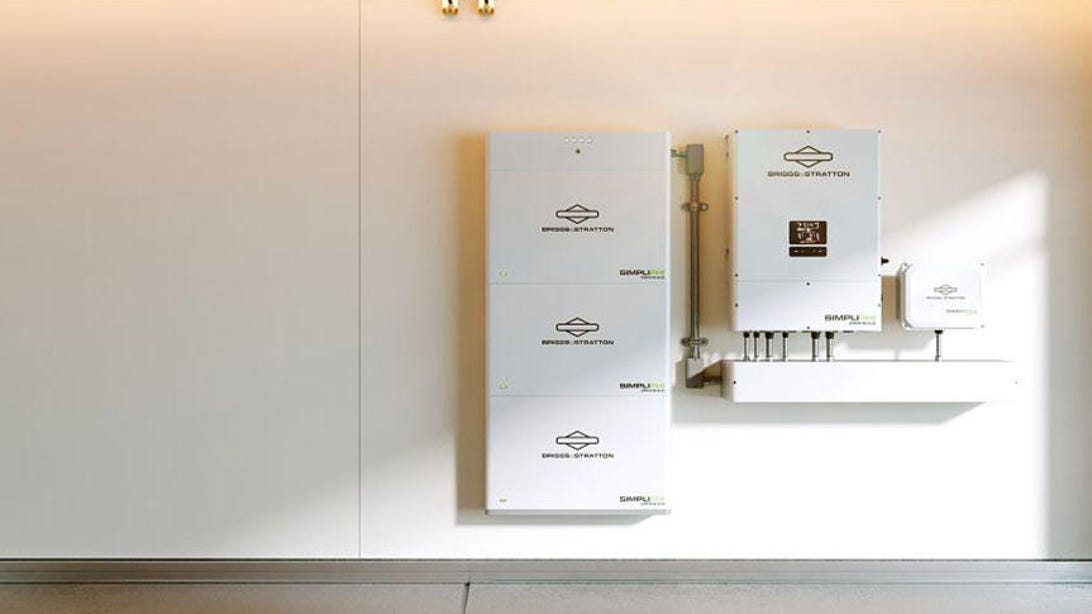
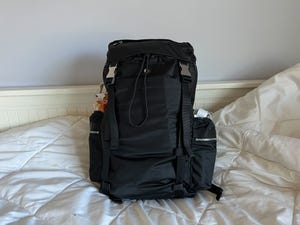
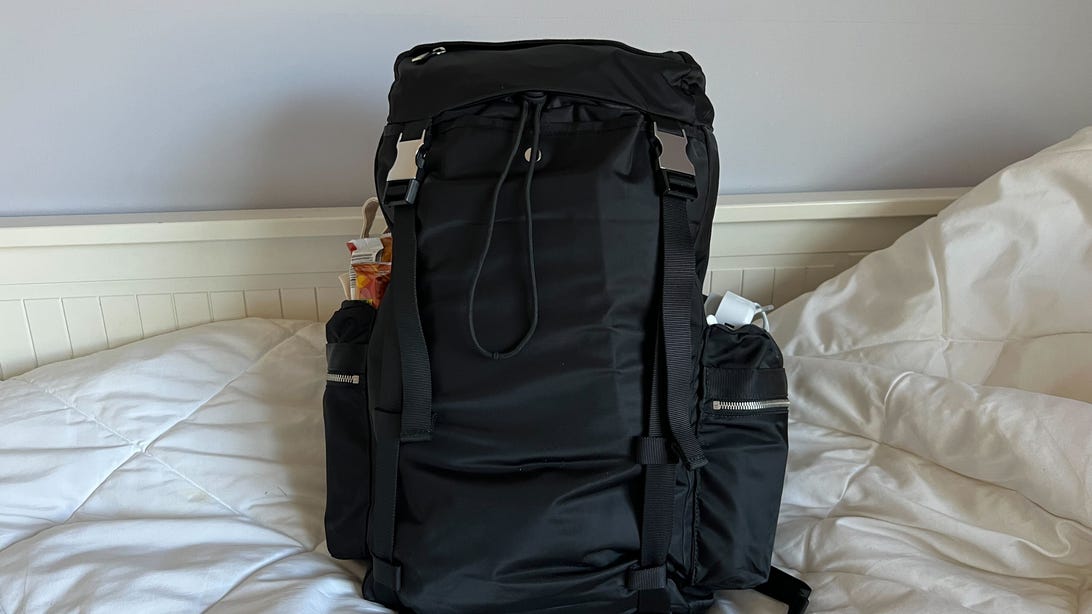




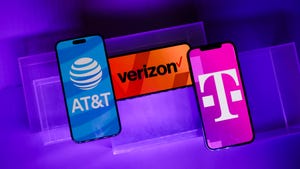
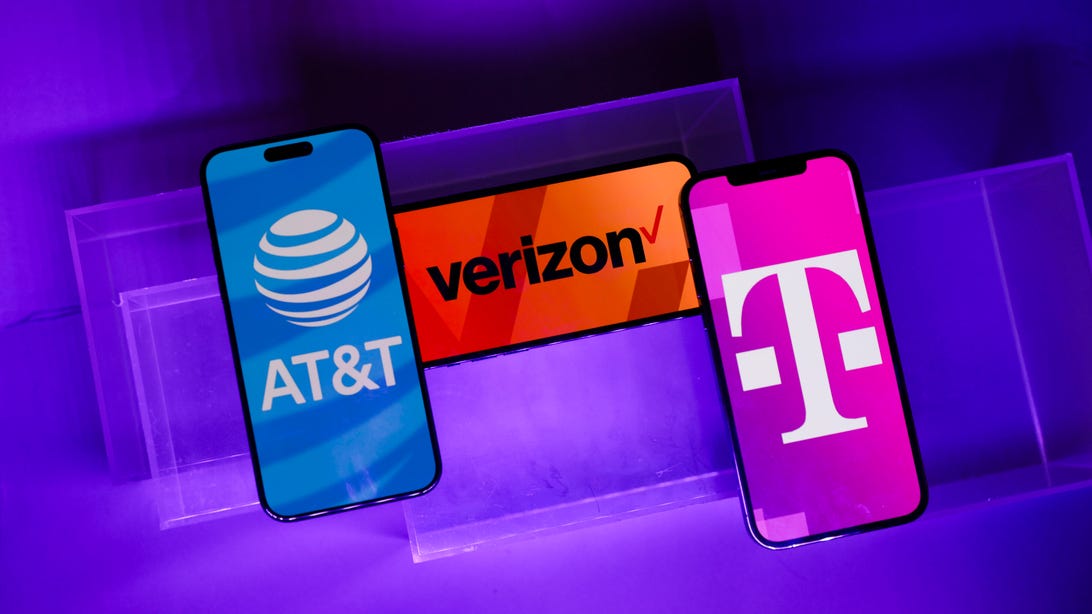



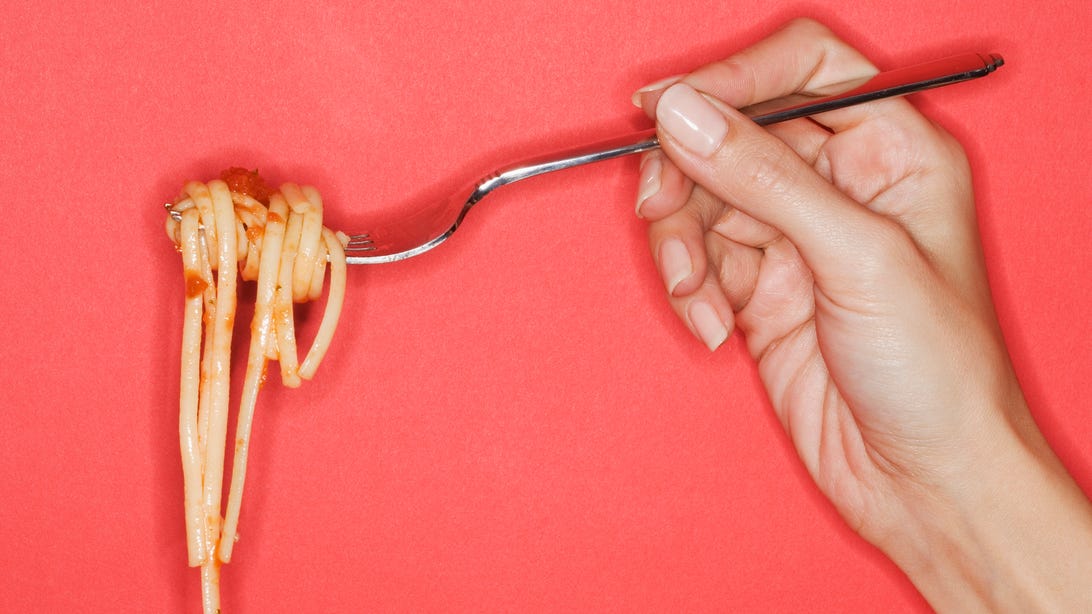



OPINION: Billie Eilish caused a bit of a stir (seemingly with Taylor Swift fans) when she commented on the state of vinyl releases for Record Store Day when she talked about the wastefulness of multiple releases. And she made a pertinent point about it.
And it’s not just multiple vinyl releases that should be viewed as wasteful, but the vinyl record industry as a whole is rather wasteful in its approach to sustainability, an aspect that should – and likely will – be coming under the microscope as vinyl continues its resurgence among music fans.
The company looking to take on this issue is Evolution Music, headed by its CEO Marc Carey, who came to a Clarity Alliance event in May to set his stall out.
He started as a DJ back in the 80s but as a keen environmentalist, he worked in the clean tech sector conducting research about materials and general sustainability, work that involved working for local authorities too.

At the same time he was still DJ-ing, turning it into the UIC radio show. Having grown tired of working in the corporate/local government area, concerned by greenwashing issues and not having enough impact on sustainability, he focused on the radio show, working with established artists but mainly also focusing on springboarding new talent. And with this environmental bent, the ethos and ethics behind UIC was based on the permaculture movement – “People Care, Earth Care, Fair Share”.
The Earth Care aspect of that proved difficult working in the music industry in terms of finding sustainable options, and like a lightning bolt, an idea flashed into being with regards to vinyl production.
And here we get to the crux of the matter, with estimates putting vinyl manufacturing as creating over 300,000 tonnes of PVC every year – how to reduce that? By creating a new type of record that will work with any record player.
Evolution Music calls it EvoVinyl, which is produced in the same way as traditional PVC LPs (to avoid having to install a new, more expensive set-up), but the raw materials have changed in using bioplastics (renewable biomass sources), the sustainability remit extending further ensure the packaging (reused cardboard) for records is more planet-friendly than before.

Plenty of testing and proving the concept from the Diamond Black pressing plant in Luton to a test listen with Mark’s friend Rob Cass at Abbey Road, and also taking their EvoVinyl to the National Physical Laboratory to test against traditional vinyl – and they found there was “no real difference”.
There is surface noise, which is being addressed, and the one difference they did find was that the biomaterial used dissipated static better. With traditional vinyl, static can affect the sound and usually involves more care and upkeep.
Having proved it can be a) be produced and b) competes well against vinyl performance, the next hurdle was to see what the music industry makes of it.
So far it’s been positive.
Brian Eno’s EarthPercent charity has done proof of concepts, including Michael Stipe’s album from 2022, with EvoVinyl used for records as part of the EarthDay 2023 concert, with Coldplay, Chvrches, Nile Rodgers, and Emeli Sande just some of a few who had records pressed to EvoVinyl as part of the concert.

As Evolution Music has worked with more pressing plants, they’ve found that because EvoVinyl presses at a lower temperature saving about 30% in terms of energy costs, and its cycle time is 50% faster (the time it takes to press a record).
But don’t think of that to mean that EvoVinyl will be glaringly less expensive than the alternative. Vinyl is expensive, which makes it prohibitive for some to get into, and EvoVinyl is likely to be the same, and with Gen Z discovering vinyl, lower costs are important to keep vinyl’s momentum going.
But the hope is that pressing plants will give over more lines for its production (and why wouldn’t they with the savings involved), and over time this will reduce the price because of the scale it’s being manufactured at.

British hi-fi brand PMC has invested in EvoVinyl as part of its commitment to sustainability, and it’s likely that you’ll be hearing more as Evolution Music and EvoVinyl gain traction.
It’s true what Billie Eilish said about the amount of waste vinyl production can produce, but the answer isn’t years away but is available right now. You might not have realised or even thought about it, vinyl is on the cusp of changing for the better.
The post Sound & Vision: Vinyl has a waste problem and Evolution Music wants to fix it appeared first on Trusted Reviews.


It’s the first of two May bank holiday weekends, but that doesn’t mean we’re taking a break from calling out our winner and loser of the week.
This week saw some big (albeit not great) news surrounding Apple, as the iPhone saw a sales drop in the second quarter of 2024. That said, Apple can’t be suffering too much as newly emerged court documents revealed that Google had paid the company $20 billion in 2022 alone simply to remain the default search engine in Safari.
We also shared our in depth looks at two exciting new phones, including the luxury Honor Magic 6 RSR Porsche Design and the Huawei Pura 70 Ultra and its unique telescoping lens.

Our winner this week is Sony as the company announced a new way to send multiplayer invites via the PlayStation app.
Soon, gamers will be able to generate shareable links on the PS5 and in the PlayStation app and send them to other PlayStation users via any messaging app or social media platform. Then, all that person needs to do is click the link or scan the QR code to join the game from the chat.
This means you don’t need to nudge your friends to come online to start a multiplayer session. For those you’ve just met, you don’t even need to add each other as friends before jumping into a game.
Another update that should encourage people to transition from their chat to a game is the PS5 session invites for Discord. Links shared in Discord will display a live multiplayer status, allowing you to check if a session is still active and how many players are present before hitting join.
Lastly, Sony is launching a feature that’ll let you share your or a friend’s PlayStation Network profile on any messaging app by generating a link. This should streamline the process of adding friends on your PS5.

Our loser this week is Spotify as some users reportedly hit a roadblock when trying to view lyrics using their Spotify Free accounts.
Users took to X/Twitter and Reddit to share their frustration after discovering they could no longer view lyrics using Spotify Free. Instead, they found themselves faced with a preview of the lyrics and a pop-up that reads “Enjoy lyrics on Spotify Premium”, suggesting that users now need to subscribe to the music streaming service to access a feature that was previously free.
It doesn’t appear as though Spotify has removed the lyric feature from Free accounts altogether. Instead, Free users will be subject to a monthly limit on lyrics, with every tap on the “Show lyrics” button counting toward this limit (via Dexerto).
Spotify users have been split on their response to this update. On the one hand, you have the Free users who are upset that Spotify would lock a previously free feature behind a paywall.
On the other hand, there are those arguing that you should pay for Spotify Premium if you can to ensure that artists get their fair share of the revenue from these streaming apps – though why Spotify can’t offer new perks (such as lossless audio from the long-awaited Spotify Hi-Fi) to encourage people to subscribe rather than revoking free features might be the real question here.
The post Winners and Losers: Sony brings PlayStation invites to mobile as Spotify adds lyric limit appeared first on Trusted Reviews.


OPINION: This coming Tuesday, Apple is holding yet another showcase event where it’s expected to unveil a new range of iPads. And if rumours are to be believed, the next iPad Pro will be powered by the Apple M4 chip.
Apple analyst, Mark Gurman, reports (via Bloomberg) that Apple could launch an M4-powered iPad Pro at the Let Loose event. What’s more, he suggests that Apple will also upgrade the iMac, MacBook Pro and Mac Mini with the M4 chip later in the year.
This has all come as a big surprise, with Apple only introducing the M3 chip back in October 2023. If Gurman’s report is accurate that would mean there will only be a 7-month gap between the M3 and M4 generations. Some may applaud Apple for the speed it’s producing new chips, but I think this is more of a negative than a positive.
Most chip makers, such as AMD and Intel typically leave at least a 12-month gap between processor generations. This is frequent enough to ensure the brands are continuously pushing the envelope but also leaves customers enough time to purchase a new device without worrying that it will become outdated within a matter of months.
| Apple M1 | November, 2020 |
| Apple M2 | June, 2022 |
| Apple M3 | October, 2023 |
| Apple M4 | May, 2024? |
This is the same tactic that Apple uses for its iPhone launches, with new phones hitting stores every September like clockwork. When spending big bucks on the iPhone 15 Pro Max, Apple fans want to feel assured that this will be the ultimate flagship iPhone for at least the next 12 months. If there was any threat of a successor launching a few months later instead, then the appeal of buying the new phone would diminish.
Unfortunately, Apple hasn’t been quite as structured with its Mac releases. In March this year, Apple launched a new MacBook Air powered by the cutting-edge M3 chip. It wasn’t a huge upgrade overall, but the new processor at least provided a welcome performance boost. However, just two months later, reports now indicate that the iPad Pro could benefit from an M4 upgrade. This would put the tablet in a strange position of being a more powerful option than Apple’s entry-level laptop.
If I had bought a MacBook Air in the last couple of months, I’d be pretty annoyed by the potentially imminent release of the M4 chip. Suddenly, the new laptop feels outdated, and I’d be wondering why Apple didn’t instead wait a couple of months to upgrade it with the more advanced chip.
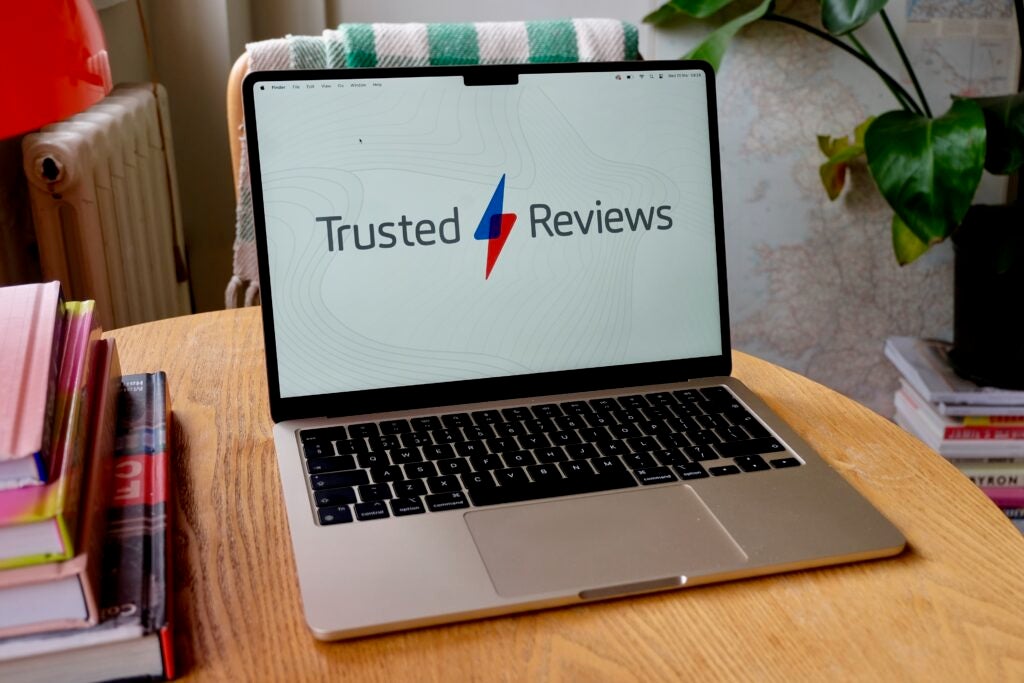
Gurman suggests that Apple has decided to accelerate its computer processor upgrades in order to show off the M4 chip’s new AI capabilities. This makes a lot of sense, with Intel recently making huge strides in AI innovation, and Qualcomm making big AI performance claims about its upcoming Snapdragon X Elite chips. The likes of Microsoft, Nvidia and Adobe have also spent the last couple of years doubling down on AI advancements, while Apple has been surprisingly quiet on the AI front in comparison and has arguably been left behind by its rivals.
The Apple M4 chip will seemingly rectify that, with the iPad Pro acting as Apple’s very first AI-powered device. I’m excited to see what kind of AI features Apple will introduce, with the company in a perfect position to innovate due to its seamless integration of both software and hardware.
However, Apple has long known about the rapid advancements and popularity of AI, so that doesn’t excuse its poor planning. The M3 has felt like a rather pointless generation to me, especially since it’s failed to materialise in several devices (including the Mac Mini and iPad Pro).
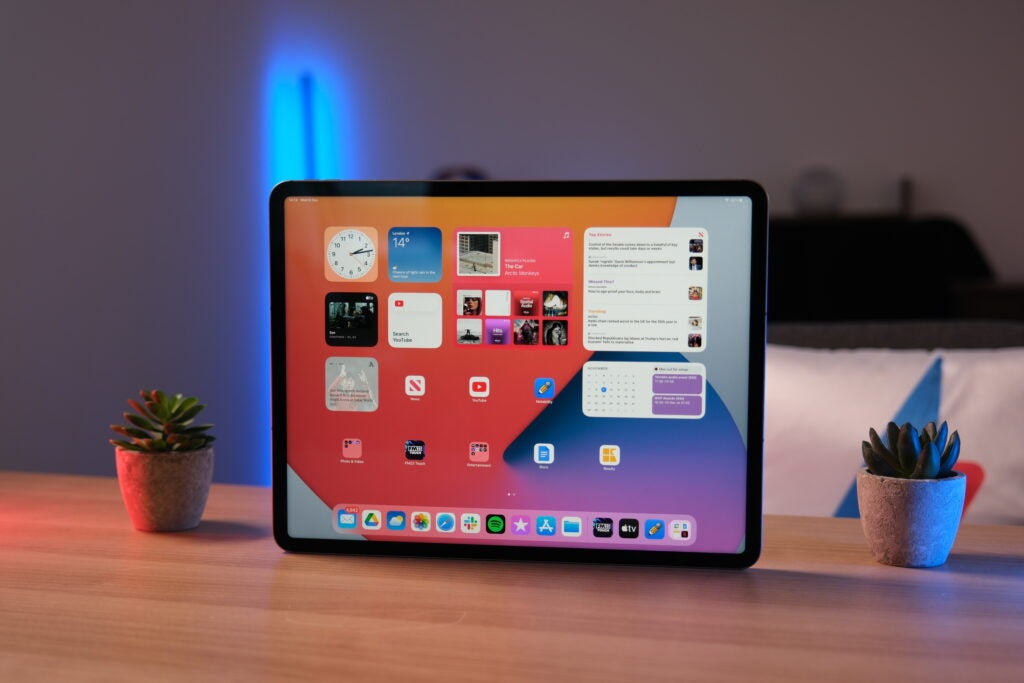
Sure, it’s helped to boost sales of Apple’s Macs, but it’s probably left many new Mac owners feeling buyer’s remorse with the M4 seemingly arriving just a matter of months after. Maybe it’s the case of the M3 chip arriving too late as opposed to the M4 arriving too early, but it’s still an issue that needs addressing.
The move over to Apple Silicon has undoubtedly been a huge success for Apple, but if it wants to continue competing with the likes of AMD and Intel, it really needs to stick more faithfully to a structured roadmap. This way, customers can feel confident that their new Mac purchase will offer cutting-edge performance for at least the next 12 months, rather than feeling outdated in a matter of weeks.
Ctrl+Alt+Del is our weekly computing-focused opinion column where we delve deeper into the world of PCs, laptops, handhelds, peripherals and more. Get it straight into your email inbox every Saturday by signing up for the newsletter.
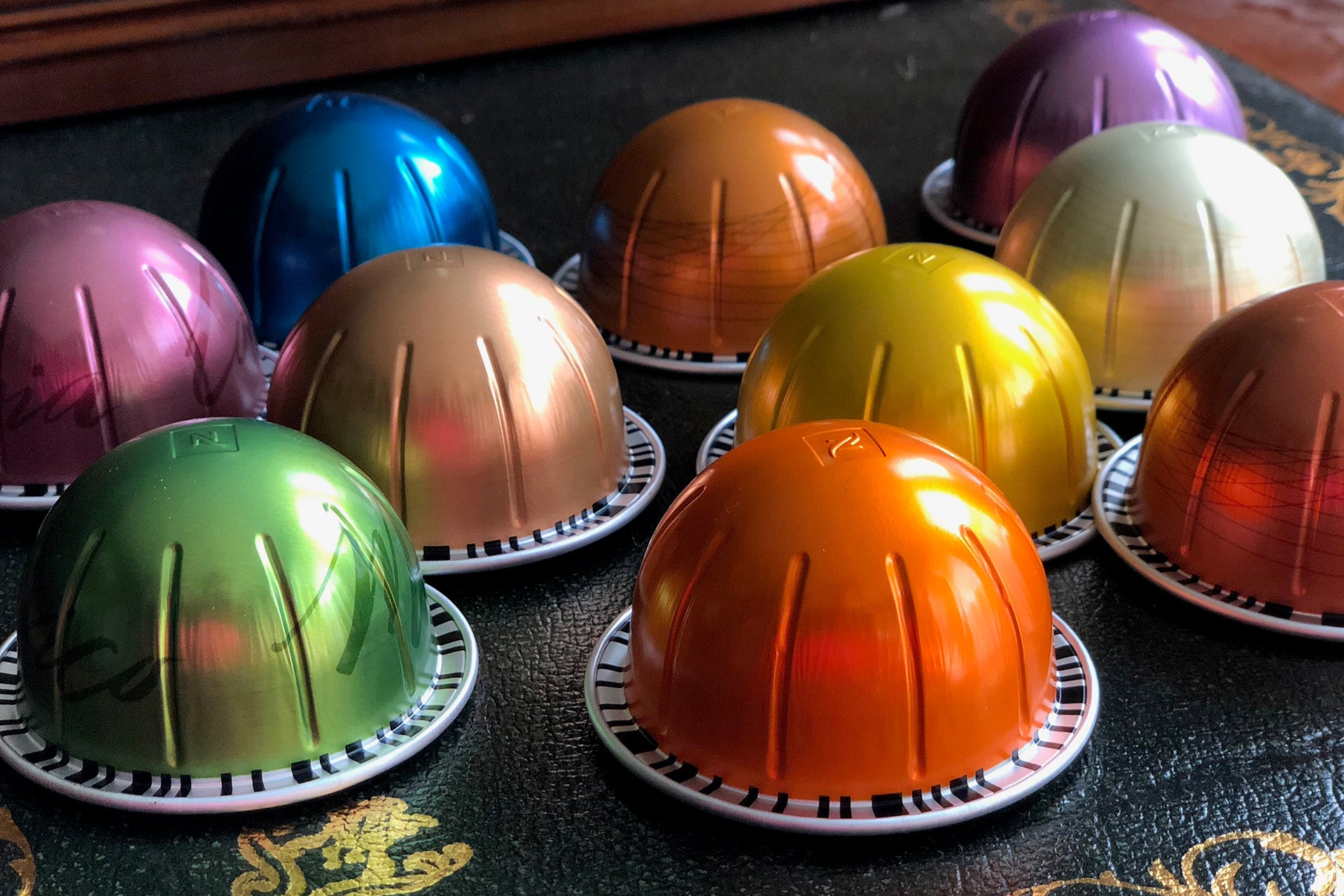
The post Ctrl+Alt+Del: Slow down Apple, it's too early for an M4 chip appeared first on Trusted Reviews.


While working on my OnePlus Pad Go review – which should be live in the next couple of days here at Trusted Reviews – I had a realisation.
The OnePlus Pad Go’s £299 price tag is indeed tempting, not only because of the boosted spec but inclusion of LTE connectivity by default, but there’s a problem: the more powerful OnePlus Pad isn’t as expensive as it was at release in early 2023 and, just like with the release of the Galaxy S23 FE and S23, is now only slightly more expensive than the Pad Go.
It’s not even third-party retailers that are undercutting the new budget tablet; OnePlus itself is offering the OnePlus Pad at quite a significant discount, with 20% off the RRP at the time of writing, bringing the full-fat tablet down to just £359 – £60 more than the OnePlus Pad Go.
That’s a problem because the OnePlus Pad boasts quite a bit more tech than the Pad Go. That includes a larger, faster 11.6-inch 144Hz display, a much more powerful processor in the form of the Dimensity 9000, along with 12GB of RAM, and rapid 67W fast charging tech that we found delivered a full charge in 64 minutes.
The OnePlus Pad also has another key strength compared to its entry-level sibling; accessory support. The OnePlus Pad offers support for both a OnePlus-designed keyboard cover and stylus, with both attaching to the tablet via magnets in the same way a high-end iPad does.
Granted, these accessories come at an additional cost, but simply the option of using them makes the OnePlus Pad a more appealing tablet than its cheaper sibling, especially for school or work purposes.


But why is this even happening in the first place? It’s mainly down to OnePlus’ decision to delay the launch of the OnePlus Pad Go in Europe.
You see, despite its 2024 release, the OnePlus Pad Go initially made its debut in October 2023 in India. That made a lot of sense for OnePlus – the regular Pad was around six months old at the time and was still selling for quite the premium compared to the Go, making the Go’s budget nature a tempting option for budget-conscious buyers.
The problem with the European launch is that OnePlus has waited too long. Tech depreciates pretty quickly, and that’s especially true in the mobile and tablet worlds where tech is advancing at an increasingly rapid pace, making what look like flagship-level products look comparatively outdated within a year of release.
That means that the discounted OnePlus Pad has a very real chance to undercut the “more recent” OnePlus Pad Go, simply because of the poor timing and significantly delayed release compared to its Indian launch.
OnePlus can’t go much cheaper than the £300 mark with the Pad Go without incurring some kind of loss – especially with elements like LTE connectivity rarely seen at the price point – so there isn’t a clear fix here. Sure, OnePlus could bump the regular Pad’s price back up to £449, but it’s still available at a discounted price from third-party retailers.
Instead, it seems OnePlus will have to commit to a European launch for its key products with a much shorter turnaround than what we’ve seen with the OnePlus Pad Go. Let’s hope the company learns from its mistakes and strengthens its Western release plans going forward.
The post Fast Charge: The OnePlus Pad Go comes a little too late – and that’s a bit of a shame appeared first on Trusted Reviews.


It’s an age-old debate about music whenever new technologies come to the fore or whenever someone introduces a different way of listening to audio. Can you hear the difference?
When it comes to music streaming services that’s a question that’s frequently asked. You might expect all streaming services to sound the same, but we’d say that they are all different from one another.
We’d also assert that it’ll differ depending on your device, and what equipment you’re using too. Each chain in the link will have an effect.
You’ll likely have heard a lot in the past few years about music providers trying to drive up the quality of audio, especially streamed audio.
Spotify still lags behind the rest with its 320kbps OGG Vorbis streams, which aren’t much higher in bit-rate than what iTunes was pumping out with its M4A streams at the turn of the century. Spotify Supremium should hopefully be coming soon to resolve this issue, but at the moment, Apple Music, Deezer, Qobuz, and Tidal all offer higher quality streams.
The marketing hook that’s been used to sell headphones is the uptake of higher quality Bluetooth codecs such as LDAC, aptX Apadative, and aptX Lossless (also known as Snapdragon Sound). This is all well and good, as Bluetooth does have a bandwidth problem and if you want to hear at the highest quality possible (say lossless audio), then that bandwidth pipe needs to be stretched open to allow more data through over a Bluetooth connection.
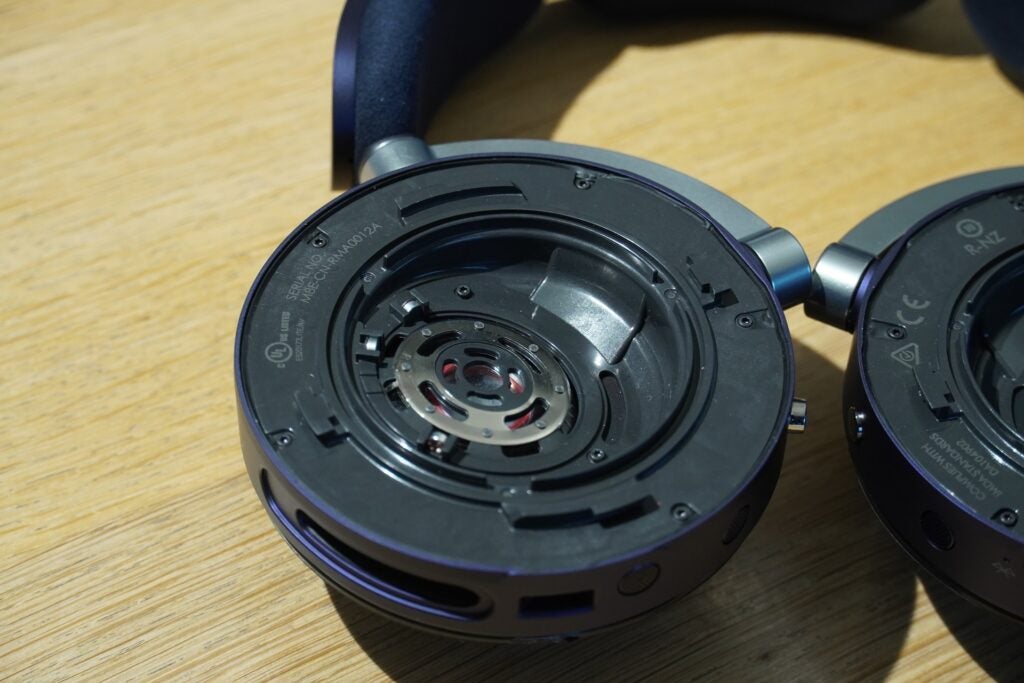
However, this doesn’t matter as much as you think it does without high quality headphone or speaker drivers. Poor quality will ensure that detail, clarity, and overall resolution won’t make their way to your ears. Tracks may sound muddy or indistinct, even if they support tech like Snapdragon Sound because the drivers can’t pass through what’s in the signal.
The tuning of drivers will also have an effect on what you hear. Is it more of a neutral sound, a crisp, analytical performance or something that sounds warm and rich. These tuning decisions will have an effect too.
Really, it’s a combination of the driver, tuning, and technology used that will ensure a higher quality performance.
Some may refute this point, but in our experience, each streaming service is tuned slightly differently in terms of how it sounds.
Qobuz is the clearest, most detailed sounding streaming service we’ve come across. Tidal sounds warmer than others, while Apple Music has a more neutral, if slightly dour tone that lacks the richness Tidal can offer. Spotify is similar, but its low bit-rate and compression also starves it of detail, definition, and dynamism.
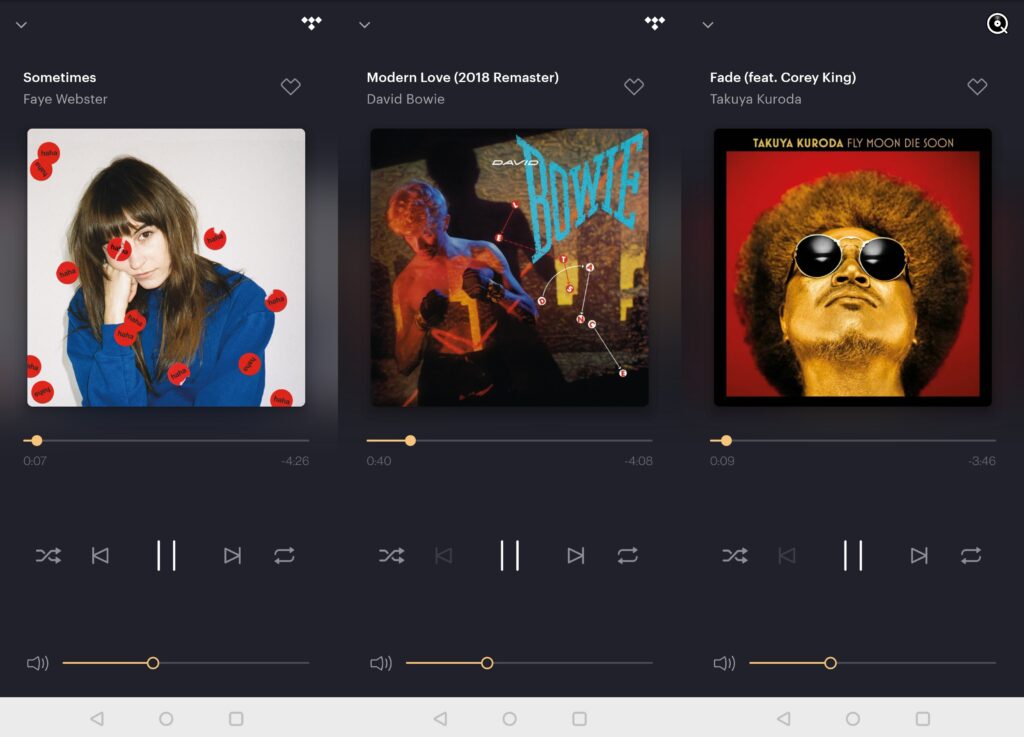
With Amazon Music, we’ve noticed that even when using the same equipment and listening to the same track, the bass can sound bigger. And there’s more to it than that, sometimes the soundstage is smaller (or bigger); other times a streaming service offers better top-end clarity. And listening on different platforms can also yield an effect. Qobuz and Tidal on an iPad sounded much more even, although Qobuz still bested its rivals in the detail and clarity stakes.
All of this is to say the quality of the streaming files, the signature of the streaming service, and how it’s delivered to your device of choice will have an impact.
Do you use a portable DAC or a headphone amplifier? You’ll yield much better results with a device that can clean up and remove the noise from the signal before it passes through to your headphones.
Do you stream over Wi-Fi or Bluetooth, as that too can have an effect. The former often leads to higher levels of resolution, even with Spotify Connect, than you’d often find when streaming through Bluetooth.
And obviously if you’re using a music streamer, a higher quality one with premium parts will be able to do a better job than a cheaper one, but at some point you’ll hit a limit and it’ll become “much of muchness” in terms of how much you spend and how much performance you get back.
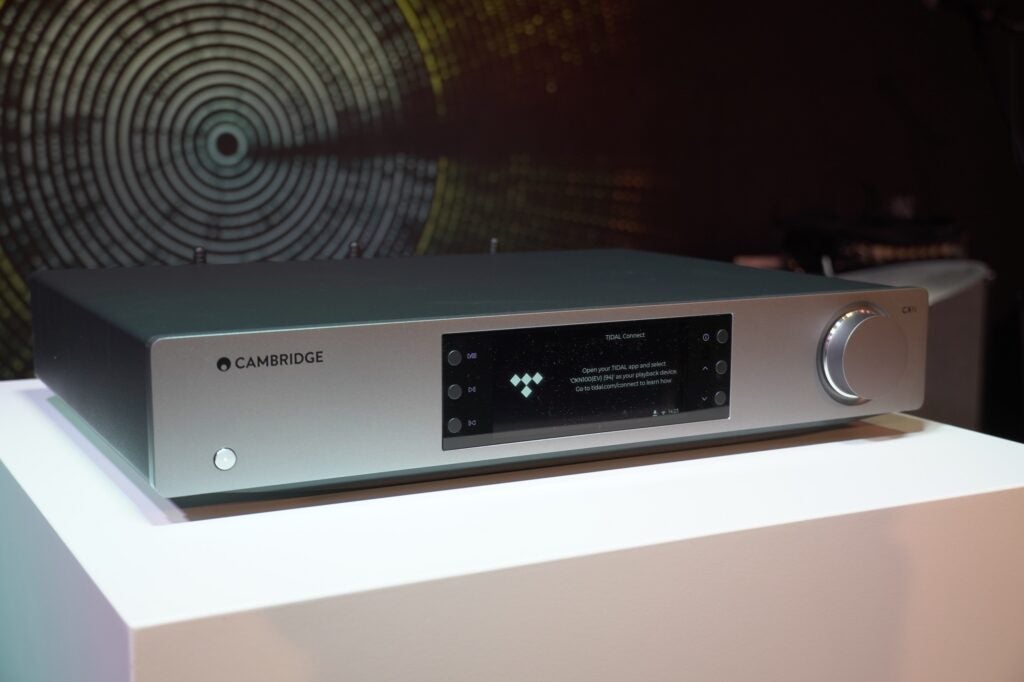
To hear the differences, every part of the chain needs to be strong without a weak link. Your source needs to be high quality, the connection between the source and the end device needs to keep the quality up and then whatever you’re listening through needs to make sure that what’s in the source at one end makes it all the way to your ears.
There are differences to be heard, some more nuanced than others. At the end of the day, it all depends on what you’re looking for. Is it an audiophile performance? Then that will guide you in one direction. Are you more a casual listener who’s not as interested in quality? Then that’s a different route too. In either case, if you like what you hear, that’s the most important thing.
Although it would be better if everyone listened in audiophile quality.
The post Can you hear the difference between Apple Music, Tidal and Spotify? appeared first on Trusted Reviews.

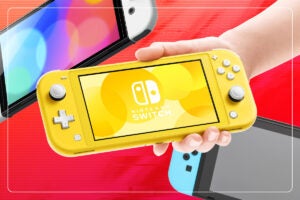
Looking to pick up your very first Nintendo Switch or trade in your current model for a different one? Here’s all your need to know.
Even though its days of being the new console on the block have long since passed, the Nintendo Switch has amassed a seriously impressive array of games in the time since it first debuted, way back in 2017.
Recent hits like The Legend of Zelda: Tears of the Kingdom, as well as bonafide classics like Animal Crossing: New Horizons, are still well worth diving into, and if you’re simply interesting in knowing which titles should be added to your library then check out our rundown of the best Nintendo Switch games.
Until the long-awaited Switch 2 becomes a reality, there are currently three Nintendo Switch consoles to choose from: the original Nintendo Switch, the Nintendo Switch Lite and the most recent (and most expensive) option, the Nintendo Switch OLED.
All of these models have unique features that make them better suited to different budgets and use cases, so if you’re not sure over which one is best for you then fear not – we’ve tested them all.
If you’re looking for something non-Nintendo in the gaming space then make sure to check out our guide for the best games consoles and best gaming laptops.
Every game console we review goes through a series of uniform checks designed to gauge key things including build quality and performance.
We’ll play multiple games on the hardware while comparing the performance to rival consoles (and predecessors) to see whether it’s worth the investment.
We’ll also evaluate the software, as well as the line-up of games when deciding on a final score.
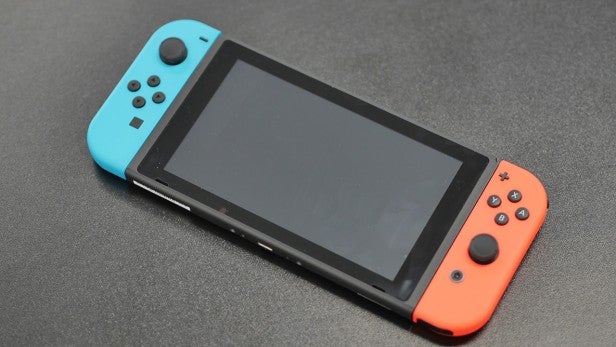 Best screen
Best screen
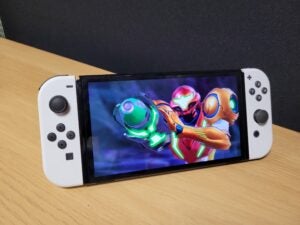 Best value
Best value
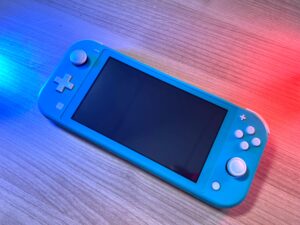 Best for kids
Best for kids
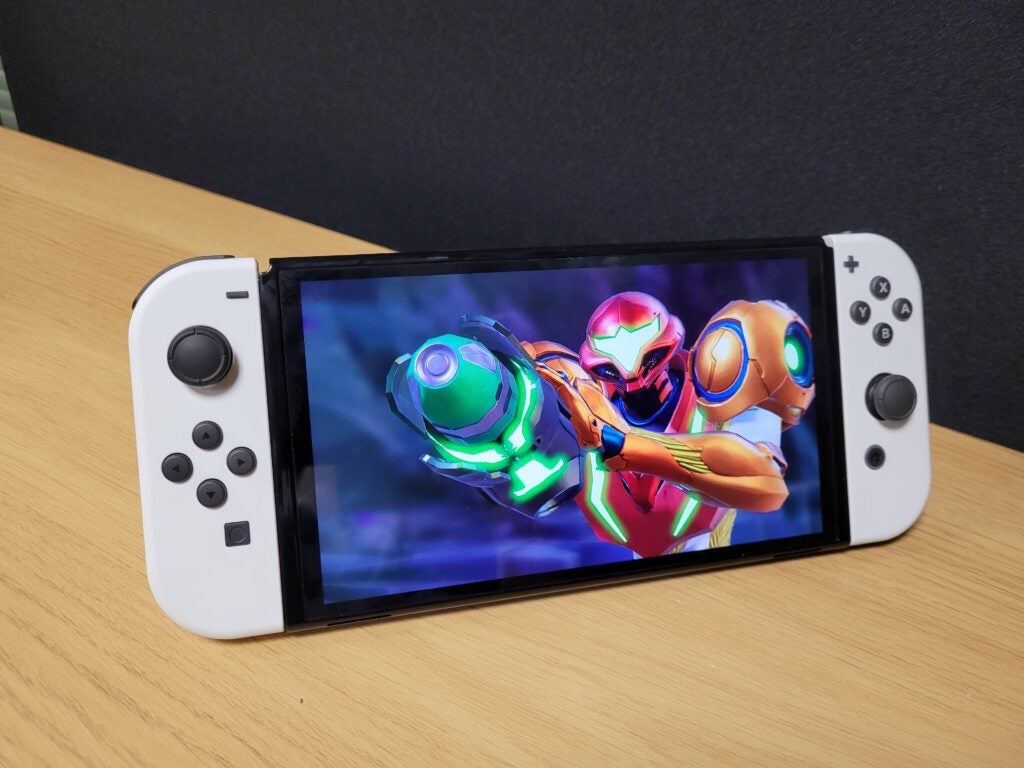





The Nintendo Switch OLED is the latest iteration of the console, with the main attraction being the new OLED panel. The screen’s colours on the latest Switch look more vivid and natural, enhancing the visual quality of every single game without any compromises to the performance. Our review of Metroid Dread notes how amazing this game looks with the OLED panel, with colours looking brighter and bolder and Samus’ suit seemingly popping out of the display.
The new Switch OLED also has a sturdier stand for propping up on a table, improved speakers and a slightly larger screen, ensuring it offers the absolute best experience for portable gaming.
It is the most expensive console of the bunch however, and unfortunately there aren’t any performance upgrades over the original Nintendo Switch, with the exception of built-in Ethernet port on the dock to give you a more stable connection when playing online.
Even with those minor gripes, the Switch OLED is still the go-to pick for many of the Trusted Reviews team as it shows off Switch games in their best possible light. Once you’ve seen Hyrule or the Mushroom Kingdom on an OLED screen, there’s just no going back.
Reviewer: Ryan Jones
Full Review: Nintendo Switch OLED Review






The console that started it all, the first Nintendo Switch launched back in 2017, but it’s still one of the best gaming consoles out there. Its versatile design allows owners to use it as both a portable and a home console when connected to a TV via the bundled dock.
The original Switch doesn’t have any standout features over the new Switch OLED, with an identical game catalogue and a similar design, albeit slightly smaller and lighter. But the original Switch is generally £50/$50 cheaper than its OLED counterpart, arguably making it the best value option – especially if you end up using it as a home console more than a portable device since the OLED screen won’t make a difference in this use case.
It’s unfortunate that the GPU hasn’t been updated since launch, which means the console relies heavily on the cloud to play modern third-party games and shows the console is starting to show its age. But no other Switch offers a better performance right now, so you’d have to opt for something like the Steam Deck instead if that’s a major issue.
But thanks to the massive gaming library and some highly anticipated upcoming titles, like Tears of the Kingdom, the Switch will remain a good option for years to come. With a middle-of-the-road price compared to its other variations and such intuitive controls thanks to the Joy-Con controllers, this is the best Switch for the majority of gamers.
Reviewer: Gemma Ryles
Full Review: Nintendo Switch review
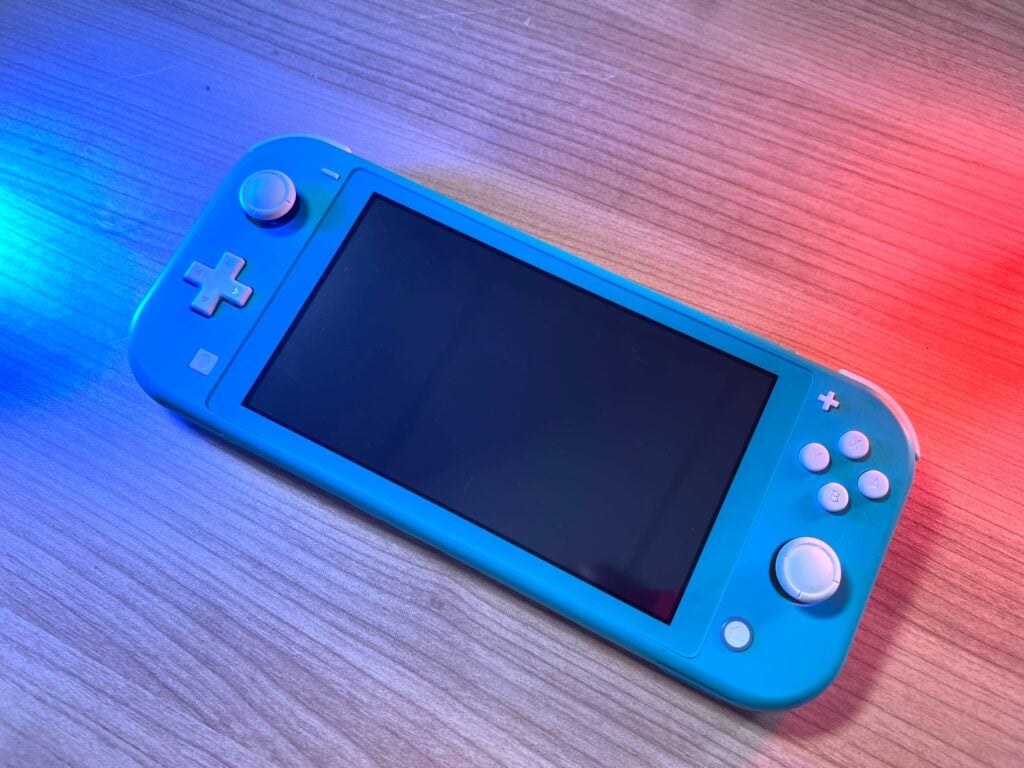





Finally, we come to the cheapest option for anyone wanting to game on the go. The Nintendo Switch Lite‘s best qualities are its portability and low price when compared to its Switch siblings.
The library of Switch games available for the Lite is virtually the same as the Switch and Switch OLED, meaning that you can still experience the latest Zelda adventure and race your troubles away in Mario Kart 8 Deluxe. The only exceptions are games that require motion control, such as Nintendo Switch Sports, as the controllers are fused to the side of the screen and so can’t be used like Wii remotes.
You also can’t dock the Switch Lite and output its display to your TV, meaning you can only experience your adventures on the small screen, and it will be harder to play multiplayer games like Super Smash Bros Ultimate with friends in the same room.
But if you’re mostly looking to use your console as a portable device, and don’t mind the adorably dinky size, the Switch Lite is a fantastic option since it boasts an affordable price and supports most of the same games.
Reviewer: Gemma Ryles
Full Review: Nintendo Switch Lite Review
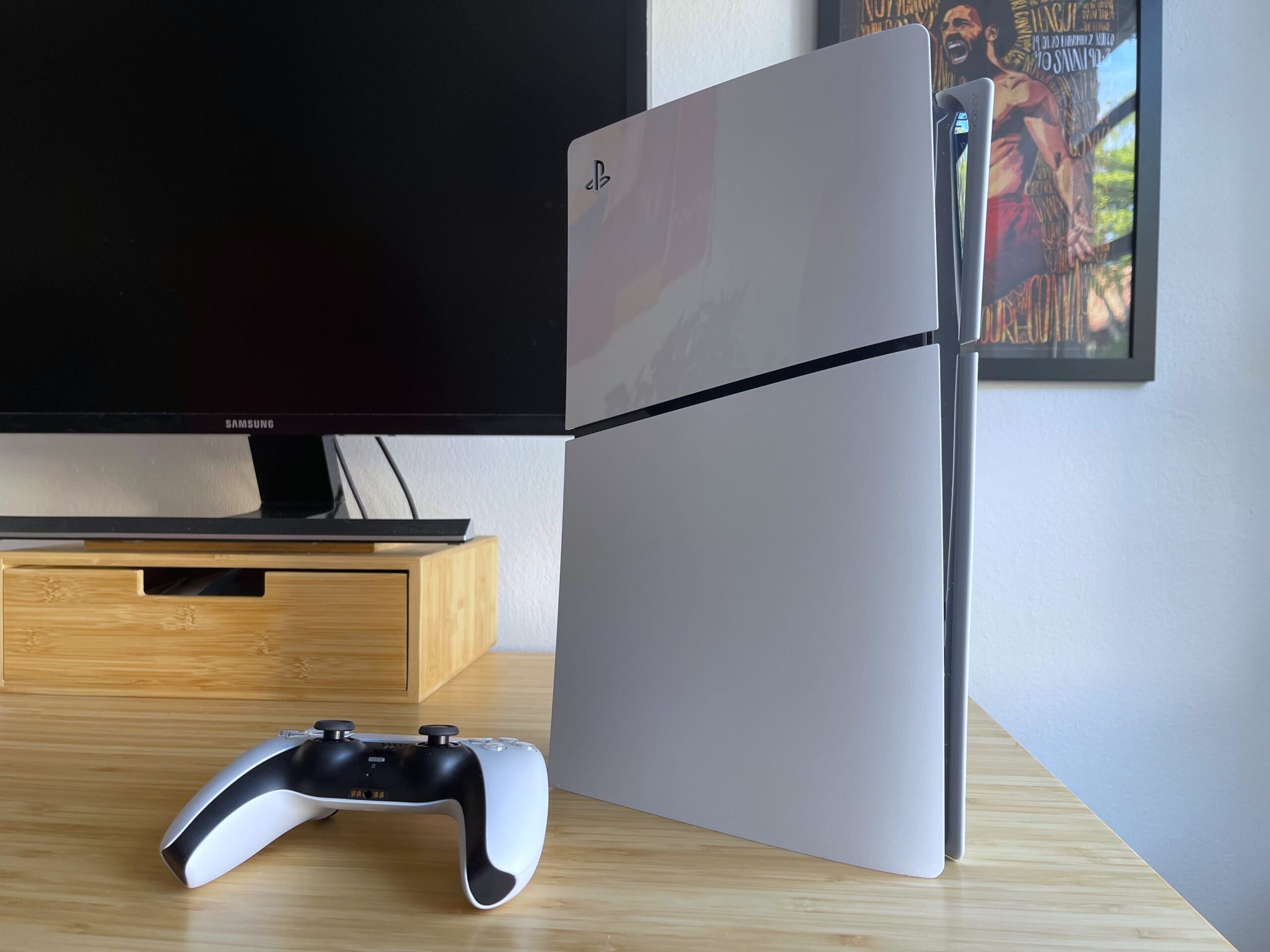
Original and Slim models tested.
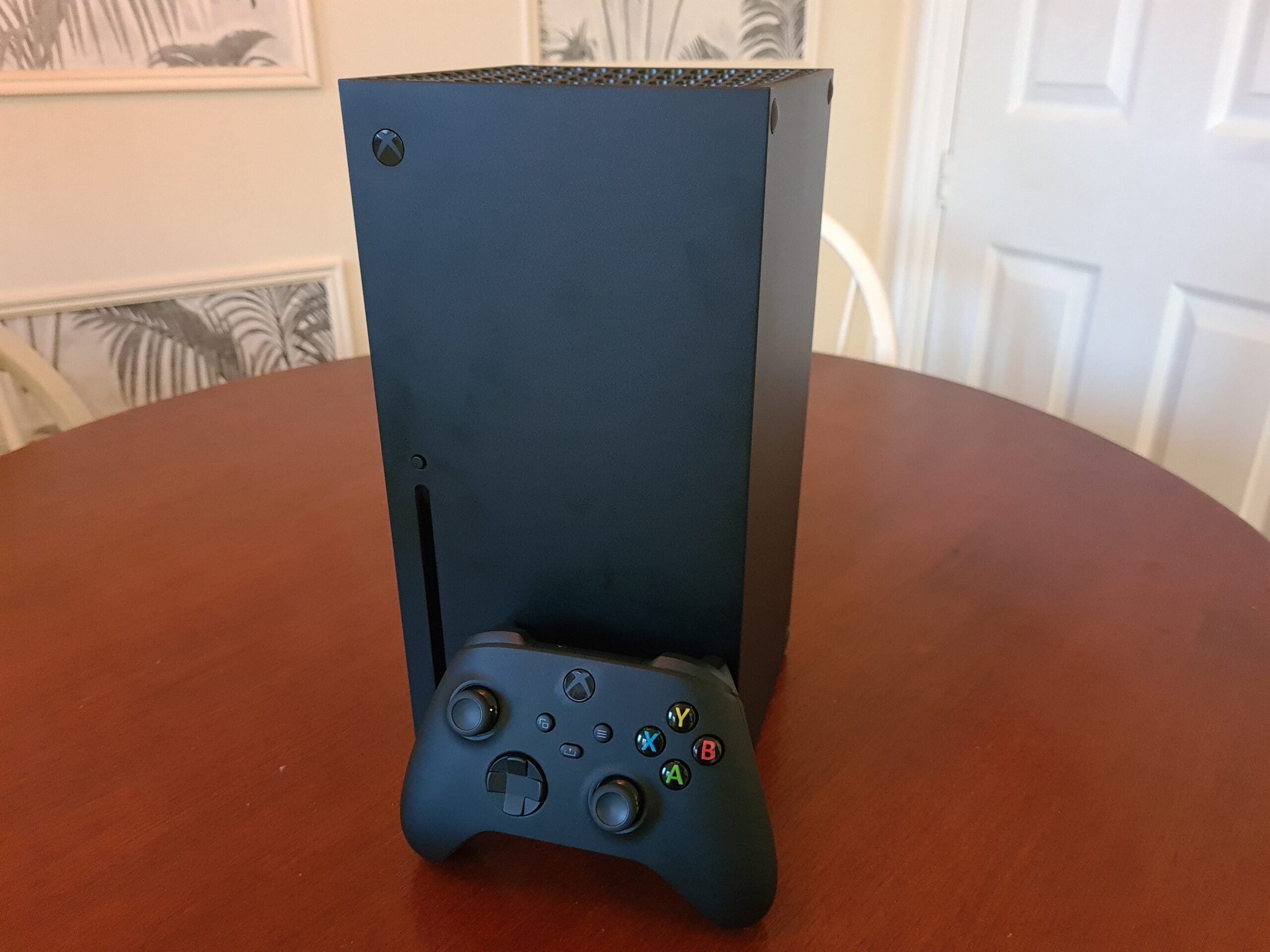
Our review of the Xbox Series X two years after release
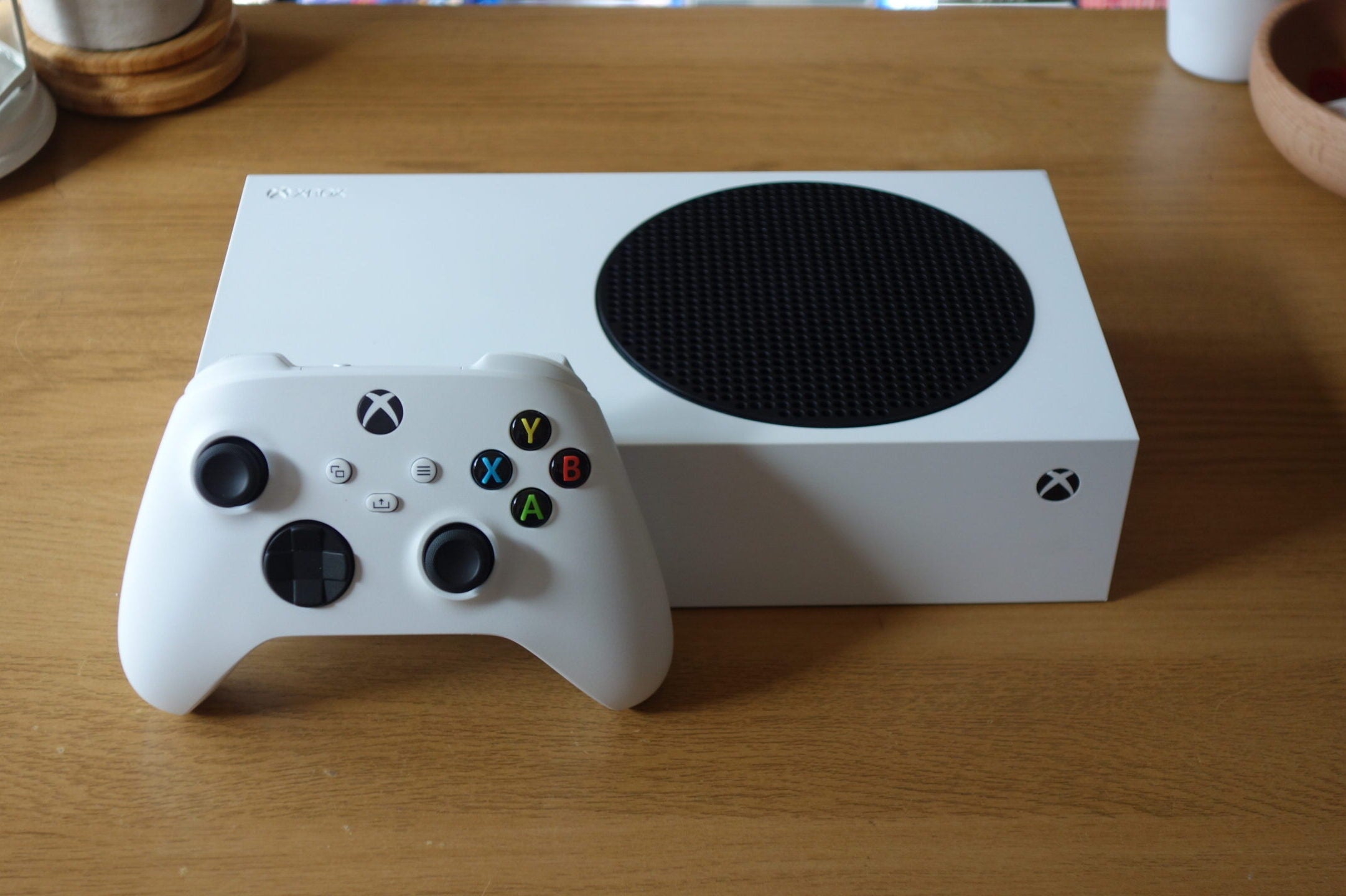
Still a great budget gaming console, now with a 1TB option.
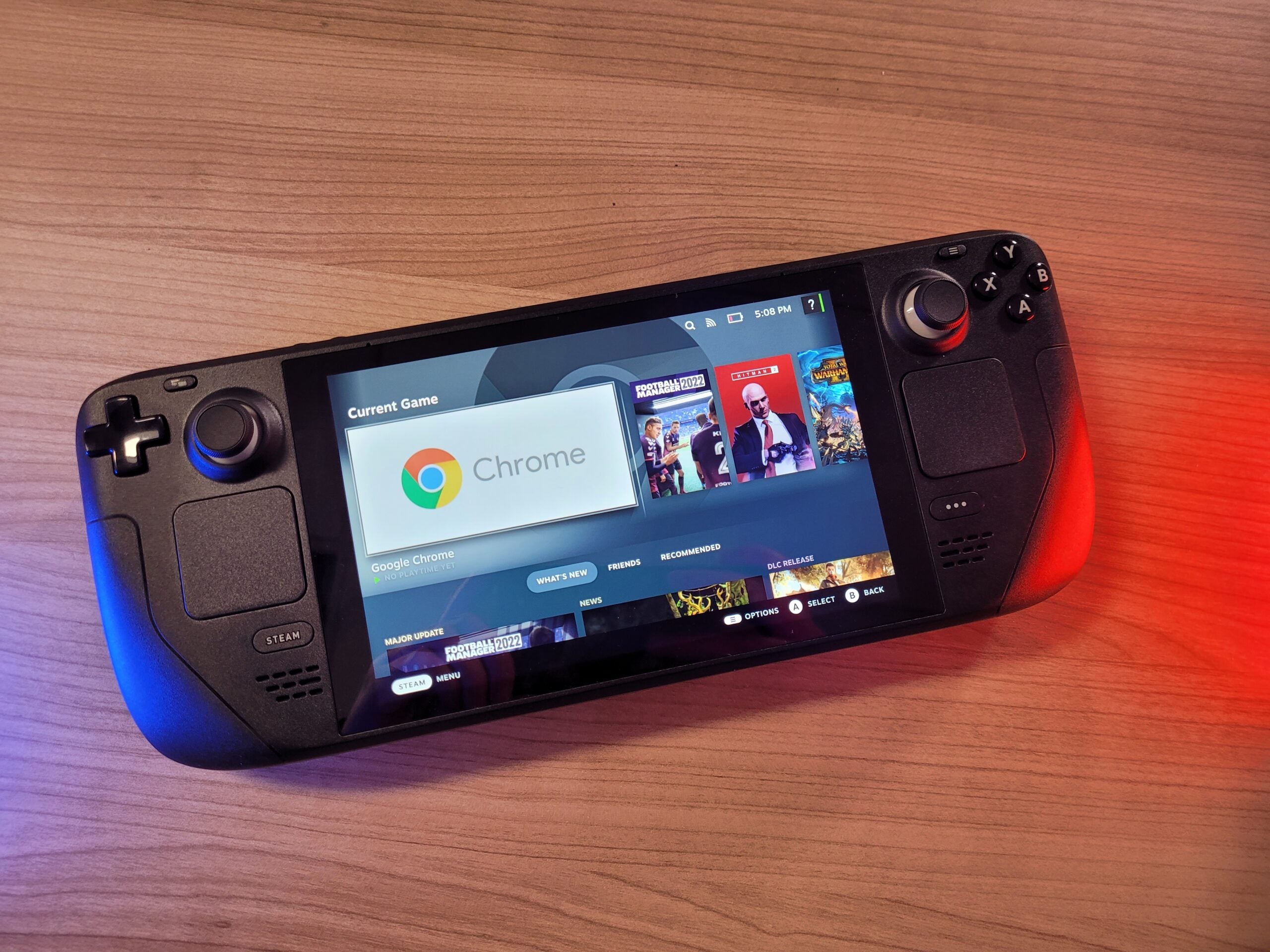
Our thoughts on the Steam Deck a year after launch
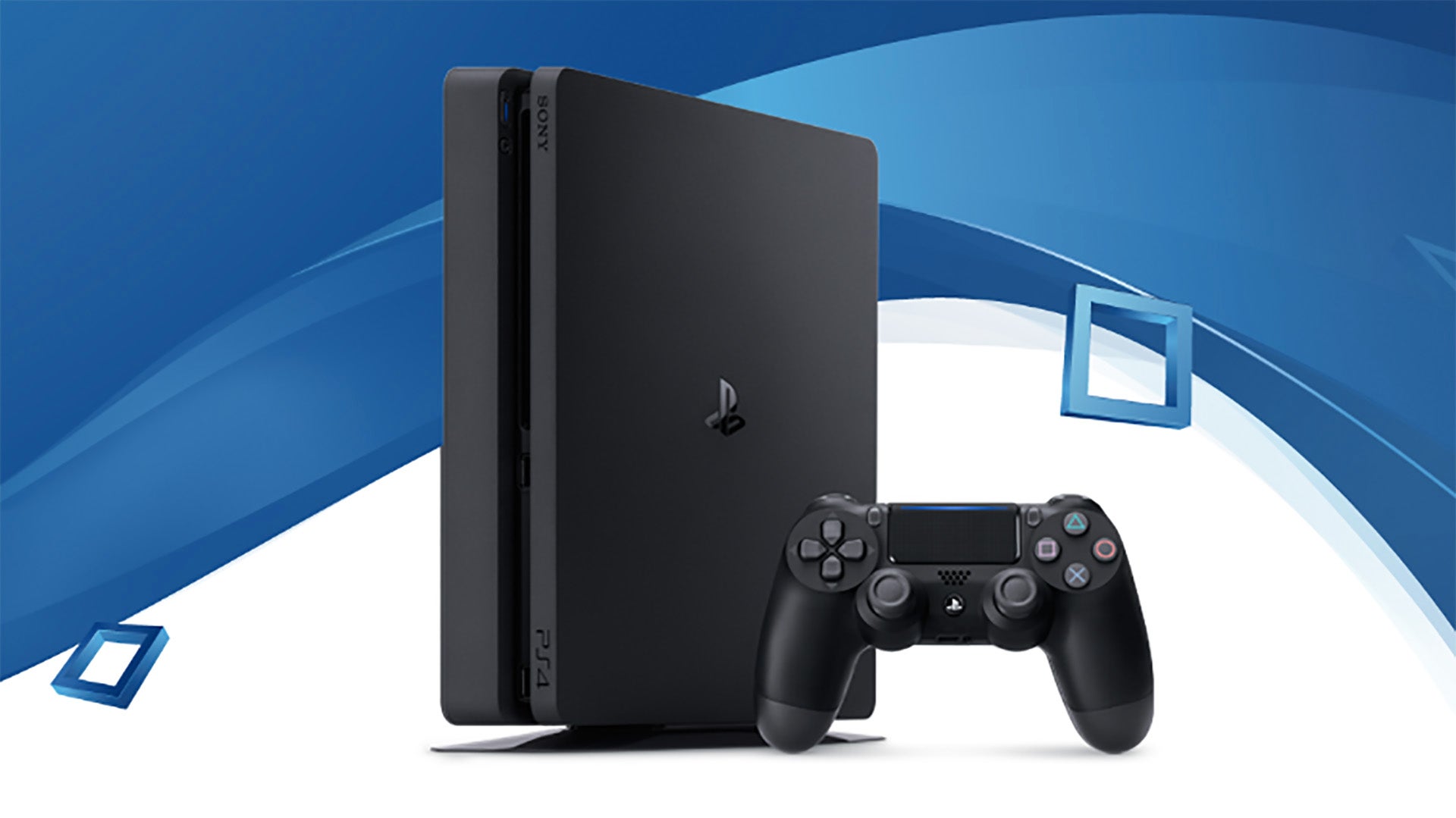
We take another look at the PS4 to see whether it’s worth a buy seven years after launch
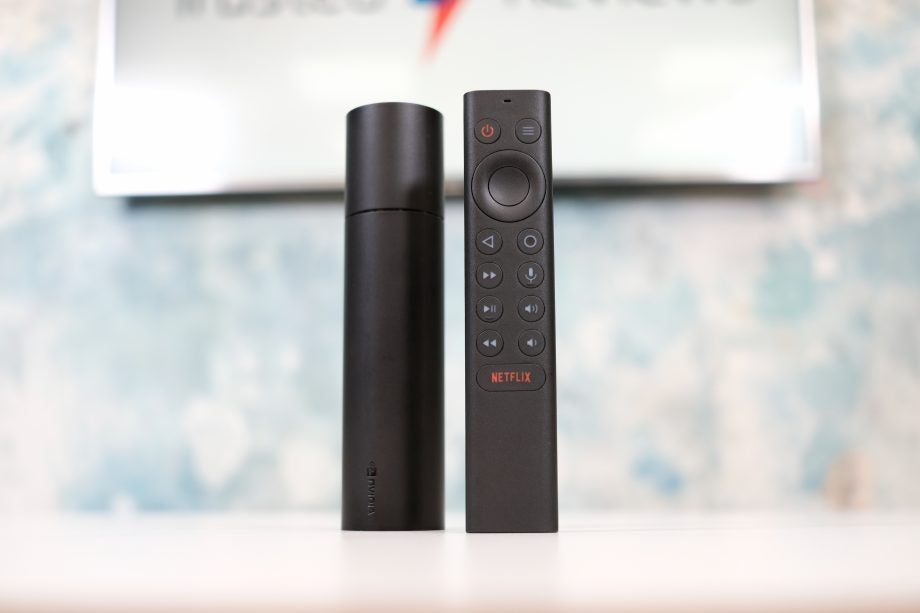
A no-brainer box for gamers
We’ve reviewed
See all reviewsThe Nintendo Switch OLED is the most expensive Switch on offer, due to its OLED panel and improved design.
Both the original Switch and the Switch OLED are great for multiplayer games. However, the Switch Lite cannot be docked, meaning that multiplayer games can’t be played on a big screen, like a TV.
All of the Nintendo Switch consoles share the same chip, and so all produce the same graphics quality. However, the Switch OLED comes with the most impressive panel, with our review noting that games look crisper and colours look brighter than the other two Switch models when used as a portable.

The post Best Nintendo Switch Console 2024: Which one should you buy? appeared first on Trusted Reviews.


A high frame rate is highly important for PC gaming to ensure a smooth performance, especially for competitive games where extra frames can provide a significant advantage.
One of the simplest ways to increase the frame rate performance is to purchase a more powerful graphics card, although this can be an expensive endeavour, and so isn’t a realistic option for many people.
We’ve created this guide to help you improve your FPS performance for free, with some simple optimisations helping to maximise the power of your PC. Check out all of the steps below to find out how to boost your performance.
And if you’ve tried all of the above and still can’t push up the frame rate to your desired level, then check out our Best Graphics Card, Best CPU and Best Gaming Laptop guides to consider a hardware upgrade.

The most important thing to do in order to optimise gaming performance is to update your graphics drivers. The likes of AMD and Nvidia are constantly releasing new firmware to keep its graphics cards optimised, so it’s important to keep your system updated.
If you own an Nvidia card, then make sure to download GeForce Experience, which will automatically download new updates for you. If you own an AMD graphics card, then download AMD Software: Adrenalin Edition instead. 

If your main priority is boosting frame rates, and you don’t mind if that means sacrificing visual quality, then reducing the resolution is a great way to boost performance.
Reducing the resolution will reduce the workload on your graphics card, allowing you to achieve a higher performance. This is why most eSport professionals will typically opt for a 1080p or 1440p resolution instead of 4K. 

If you’re lucky enough to own an Nvidia RTX graphics card, then you’ll have access to its DLSS technology. This uses AI to boost the FPS performance of a game, and has been highly effective in the most recent range of GeForce graphics cards. The big caveat here is that not every game supports DLSS, and so is mostly reserved to newer titles.
If you don’t own an RTX card, then you should have access to AMD’s FSR technology instead. This isn’t quite as advanced as DLSS, but is still effective at boosting frame rate thanks to upscaling solutions, although can cause unwelcome artefacts to the game’s visuals. But if boosting frame rate is your priority, FSR is still a useful tool.
You can activate DLSS or FSR through a game’s settings menu. It’s worth using an FPS counter (available through Steam) to see what kind of effect they have on performance. 

Graphics cards now make use of dozens of features to help video games look as realistic as possible. They’re excellent options for improving visuals, but they can often be a detriment to the FPS performance. Fortunately, you’ll be able to deactivate each feature through a game’s graphics settings menu.
Ray tracing is the big one to look for. This is a cutting-edge technology that improves the lighting, shadow and reflection effects in modern games, but it’s extremely taxing on the GPU, so deactivating it should see your performance improve. Some games will have it turned on by default, so it’s worth having a look.
Vsync is also a great feature for preventing screen tearing, but will restrict your FPS performance somewhat. Anti-aliasing will often by on by default too, as it helps to smooth out ugly jagged edges for in-game objects. Turning off both of these features should help to improve your PC’s performance.
It’s also worth checking whether you can reduce the draw distance in a game. This determines how much of a 3D environment will be rendered at one given time, with a high draw distance allowing you to view in-game environments and objects from a greater distance. Reducing this will of course ease the pressure on your GPU and increase performance. 

Game Mode is a highly useful tool built into Windows which will automatically disable background tasks on your PC while you’re playing a game. This will dedicate all of your PC’s resources to your game to ensure the fastest performance possible.
Game Mode is generally enabled by default, but it’s still worth double checking as it’s an easy fix. Simply search Game Mode in the Windows search bar, and slide the toggle to On. 

This step is specifically for gamers using a laptop or a handheld device, as it involves boosting performance to the detriment of your device’s battery life. On a Windows device, you can do this by going to Settings > System > Power & Battery > Power Mode, and then selecting Best Performance.
Certified gaming laptops will sometimes even have a Turbo mode which not only maximises performance, but also increases power to the fans to keep your system as cool as possible during such workloads. You will of course get an even better performance by making sure your portable is plugged into a power source.
The graphics card (or GPU) is the biggest influencer on FPS performance, so it should be at the top of your list of parts to upgrade. That said, upgrading your CPU and RAM can also have a positive effect on performance.
A 60fps performance is perfectly fast enough for the vast majority of gamers. This is the performance you can expect from a PS5 or Xbox Series X. That said, those who want a competitive edge in the likes of first-person shooters will see the benefit of increasing the performance beyond 100fps.


The post How to optimise your gaming PC for better FPS performance appeared first on Trusted Reviews.


Smartphones are pretty powerful in 2024, and that’s particularly true of gaming phones like the Asus ROG Phone 8 Pro Edition and RedMagic 9 Pro, delivering the very best possible performance from any smartphone right now to provide the best gaming experience around.
However, even with top-end gaming-focused hardware, there are ways that you can optimise your phone’s settings to squeeze out even better performance – ideal for particularly taxing games like Call of Duty Mobile and Genshin Impact.
With that said, here are four ways you can optimise your gaming phone for peak game performance. If you’re yet to pick up a gaming phone, take a look at our selection of the best gaming phones to make sure you’re getting one of the best.
Most gaming phones come with a top-end smartphone chipset and plenty of RAM to boot, all in the name of delivering the best gaming performance possible from a phone. That’s usually enough to provide a great gaming experience with top-end graphics enabled and smooth frame rates, but you can eke out even better performance in particularly demanding titles by enabling Performance Mode.
Though the exact location of the mode switch depends on the smartphone you’re using, you can usually locate it by going into the Settings app, tapping the search icon and searching for performance.
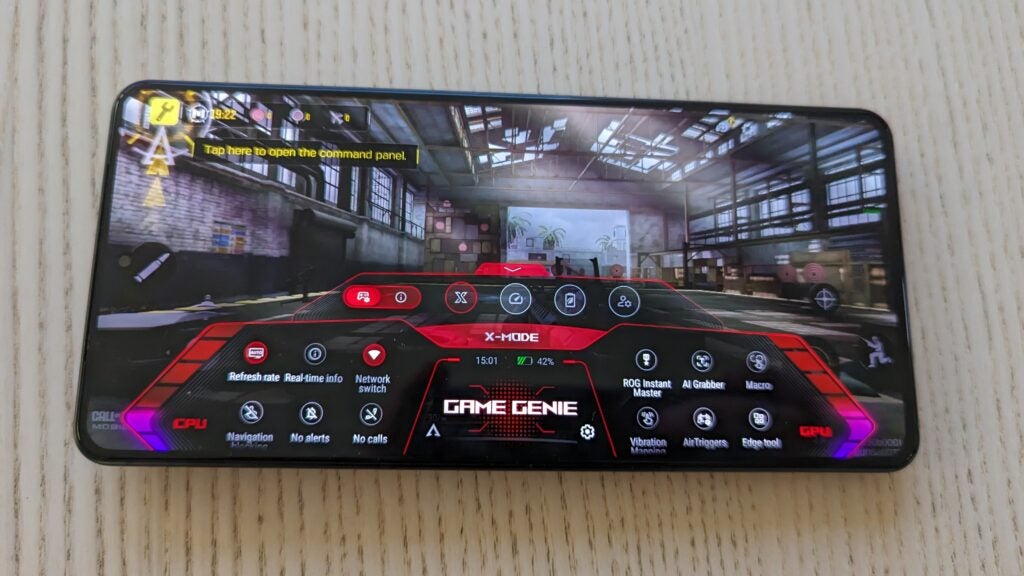
Once enabled, the phone will deliver the best performance possible, though that does come at a cost to both battery life and internal temperatures, as your phone will get noticeably warmer when gaming.
That shouldn’t matter too much if your gaming phone has a solid cooling system, but if you’re using a regular smartphone, the heat could actually cause the phone to overheat and bottleneck performance as a result – the exact opposite of the desired effect.
This overheating can be negated with the use of mobile gaming accessories, with some mobile controllers sporting built-in cooling, but it’s worth bearing in mind – especially if you’re not using a gaming-specific smartphone.
This tip is more for top-end flagship phones instead of gaming phones, but it could be relevant for both depending on the spec of your gaming phone.
You see, while you’d assume that a higher screen resolution would equate to a better gaming experience, that’s not always the case. Flagship phones like the Samsung Galaxy S24 Ultra are indeed capable gaming phones, but performance takes a hit when there are simply too many pixels to power.
It’s why most gaming phone screens sit at the FHD+ mark, offering a sweet spot both in terms of overall screen quality and game performance.
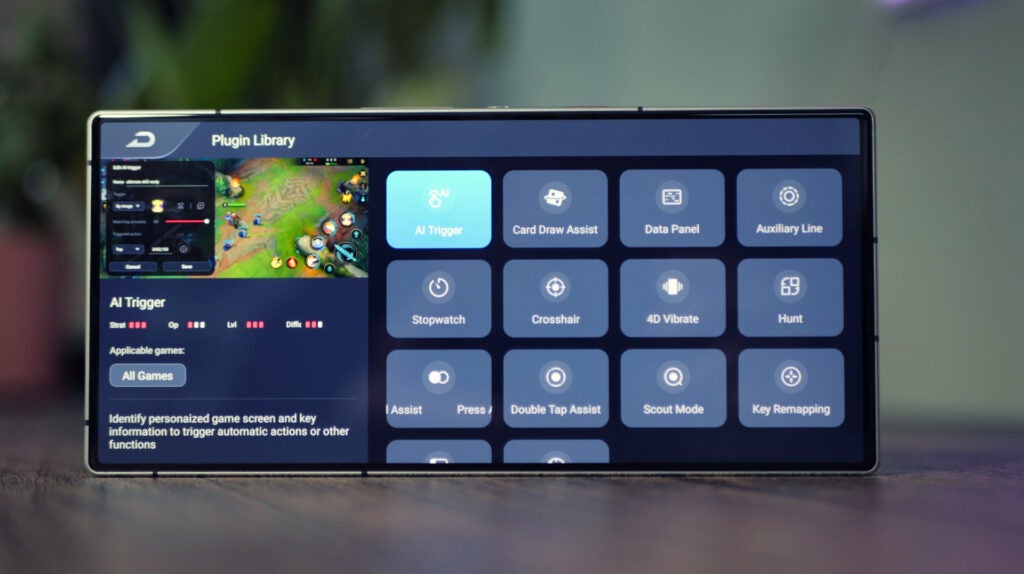
If you find that your smartphone, gaming or otherwise, has a particularly high resolution, head into the display section of the Settings app and adjust the screen resolution. Most high-res smartphones offer an FHD+ mode, primarily for better battery performance, but it also serves our purposes here.
On a similar note, be sure that your screen’s refresh rate is set as high as possible. While detrimental to battery life in everyday use, selecting the highest refresh rate in your display settings will allow your phone to display the maximum frame rate possible in supported high-framerate games, further improving performance – particularly in online shooters.
Practically every gaming phone on the market has its spin on Game Mode, a mode that can further optimise your mobile gaming experience.
The exact specifics of said Game Mode depend on the manufacturer of your smartphone, but most offer the same broad set of features; the ability to mute incoming calls and notifications to avoid distraction, close all background apps to improve performance and some even include on-screen overlays to give you a breakdown of current performance as well as access to macros.
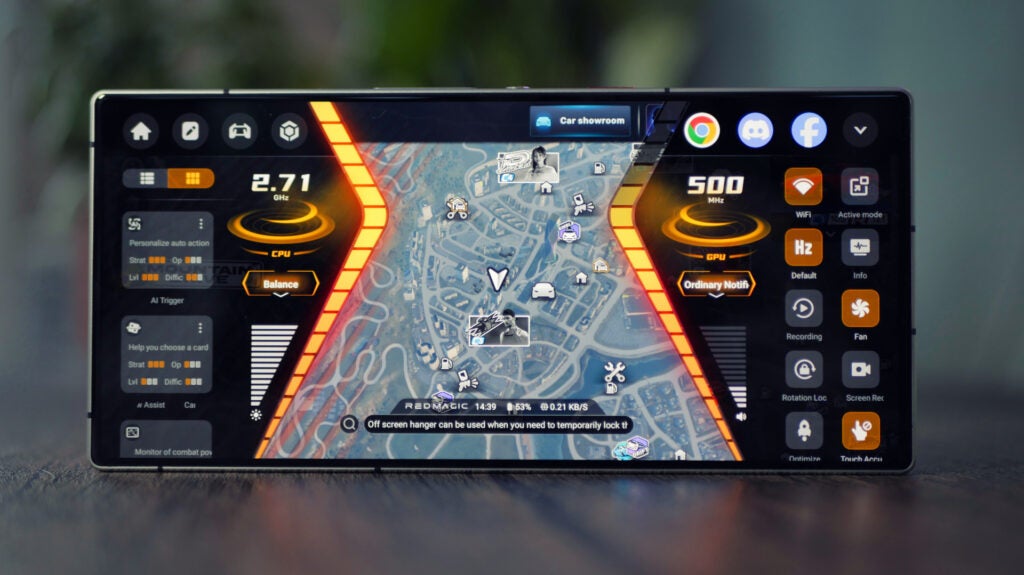
Most dedicated gaming phones will have a dedicated Game Mode app where all your games are easily accessible in a console-esque UI. To make sure that you’ve got Game Mode active on your favourite game, add it to your Game Mode list. Most games are added automatically but the automatic selection isn’t always perfect.
Then, with your game active, simply activate the Game Mode overlay (again, the exact method depends on your phone) and enable the features you’d like to use.
Finally, it’s time to adjust your in-game graphics settings to get the best performance possible. Most games are designed with the limitations of smartphone performance in mind, and that means that if you’re rocking a top-end gaming phone, you’ll be able to enable the best graphics possible (in games that support graphical settings anyway!).
However, there are some games that, even with top-end gaming hardware, can be taxing on the phone’s SoC – Genshin Impact is one of the most popular of its kind. Even on top-end phones, the game struggles to maintain a solid 60fps with all graphics settings cranked up to the max.

With that in mind, it’s a good idea to tweak the graphics settings of any particularly demanding title, bringing down elements like textures and disabling high-end features like ray tracing to increase frame rate. It might not look quite as good, but if top-end performance is what you’re after, it’s a worthy trade-off.
The post How to optimise your gaming phone's settings for peak performance appeared first on Trusted Reviews.
